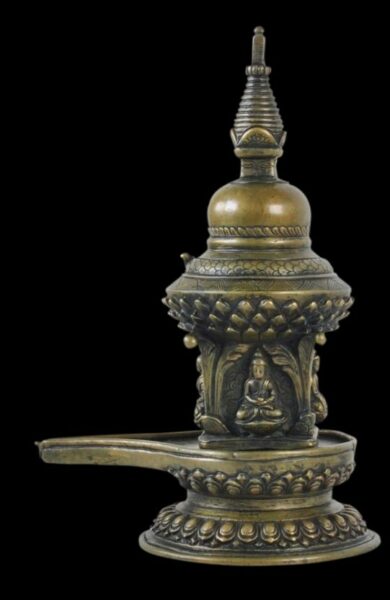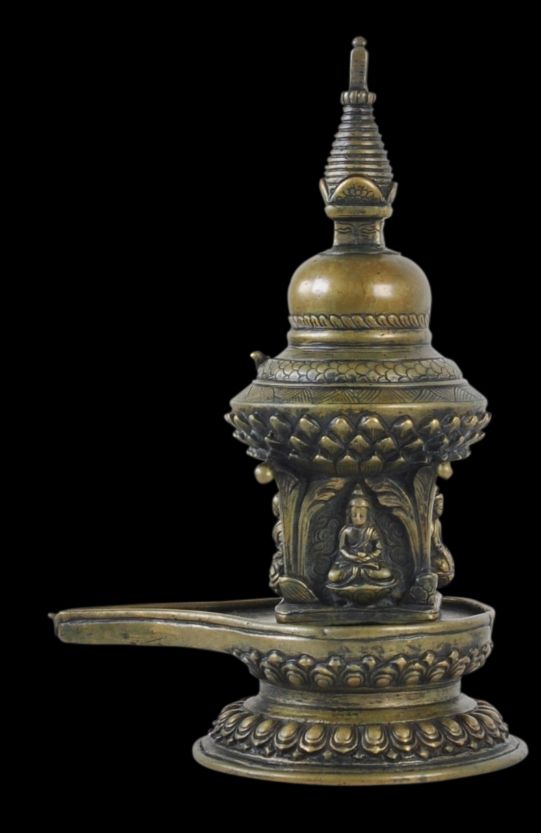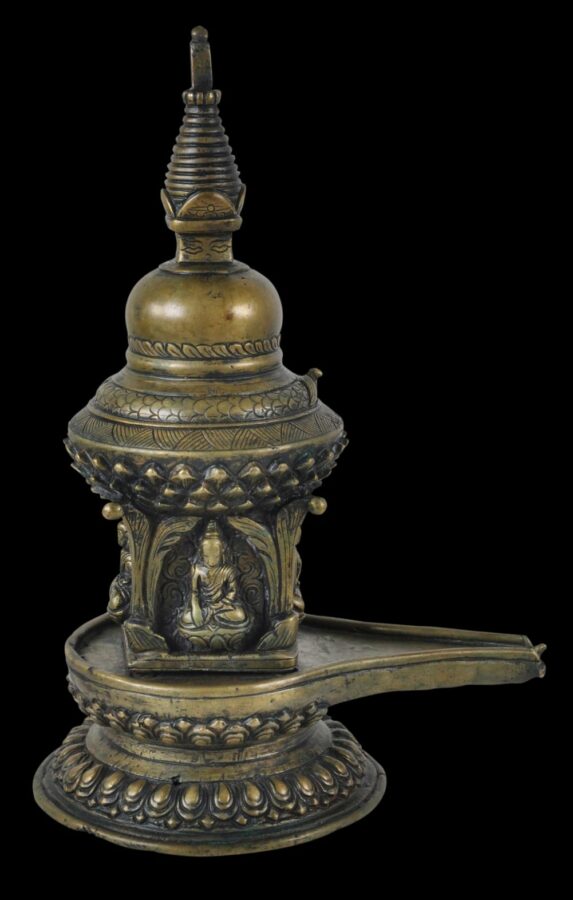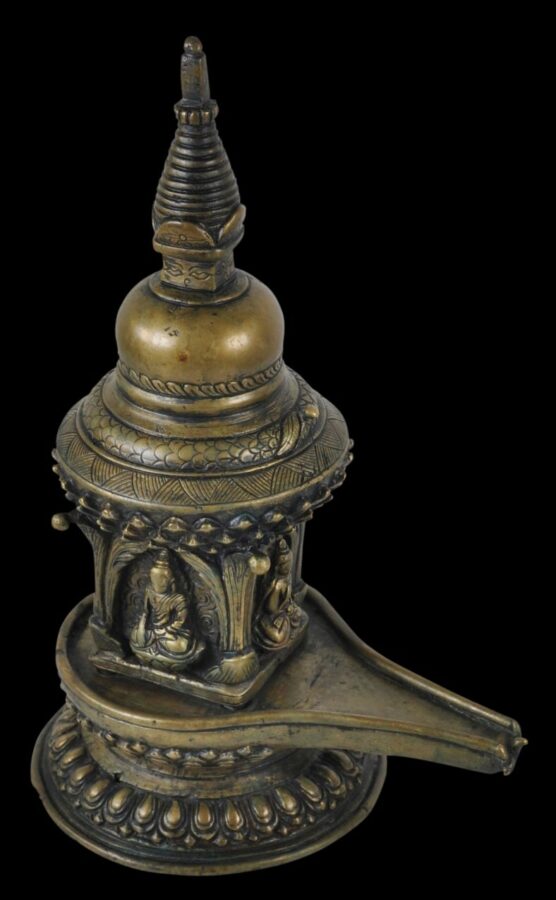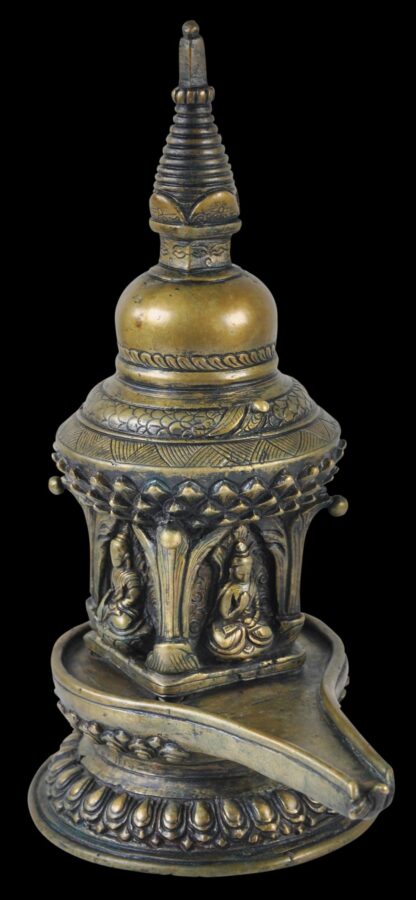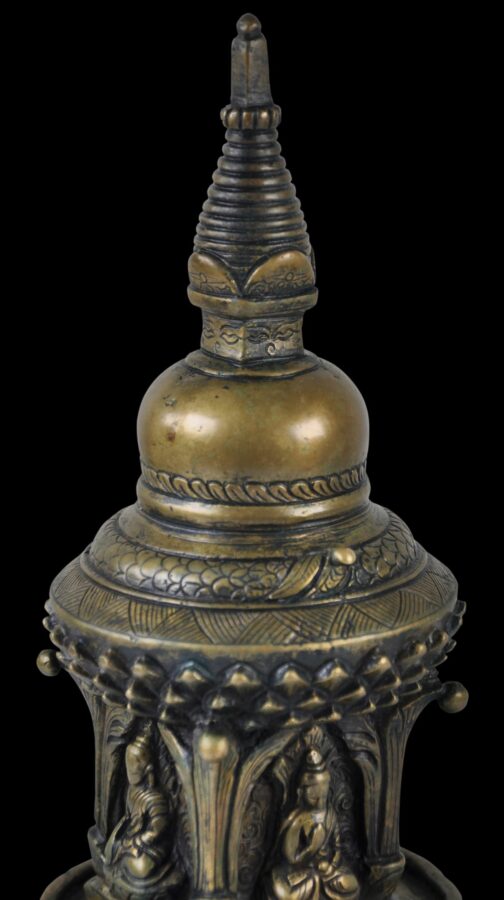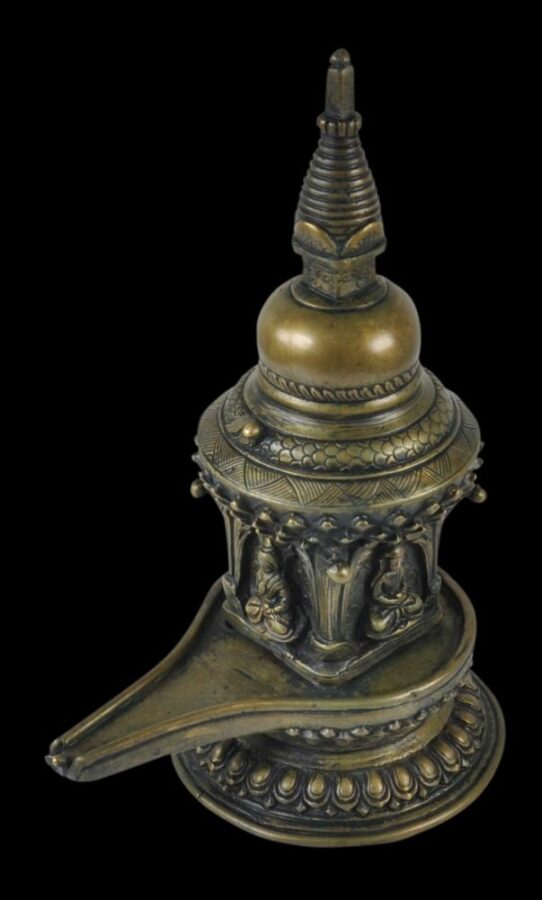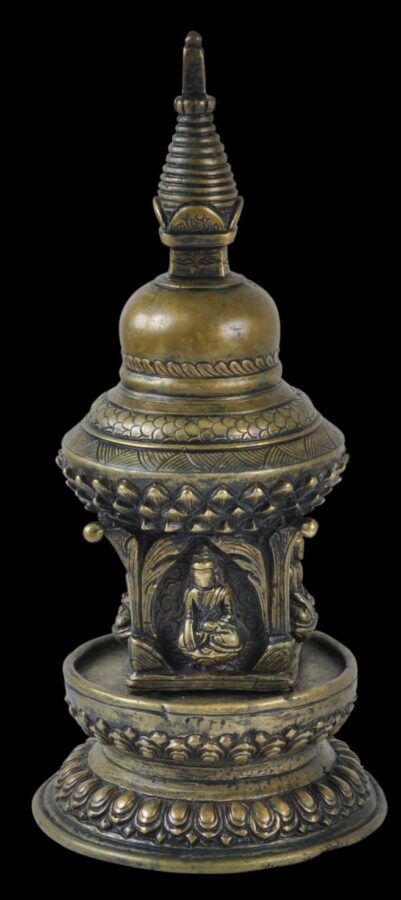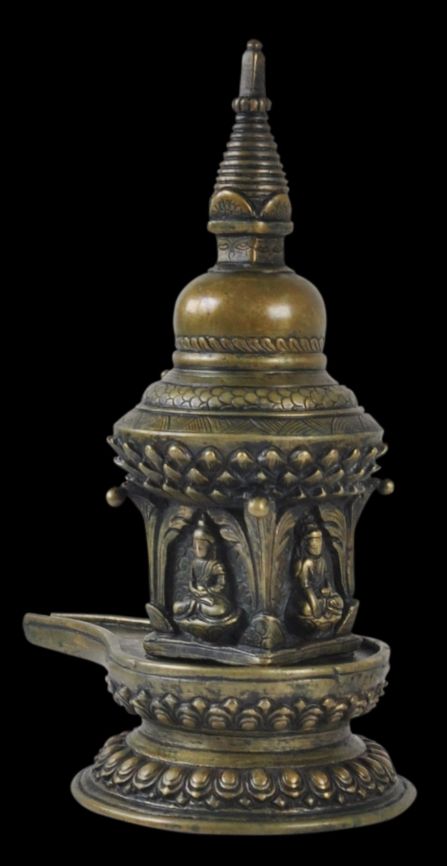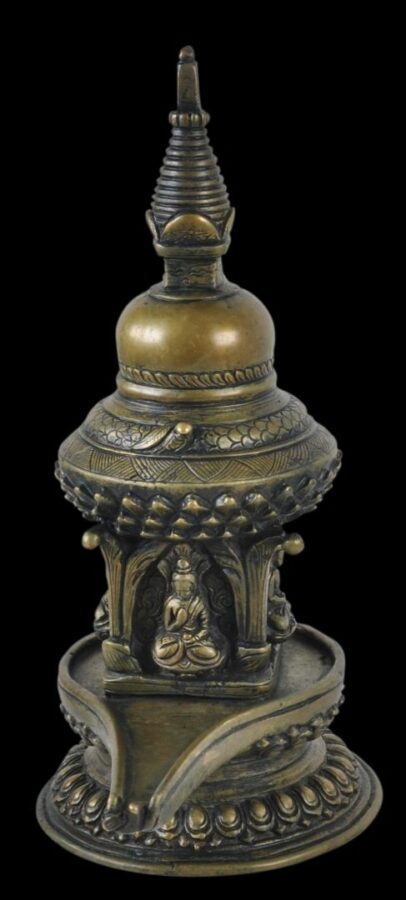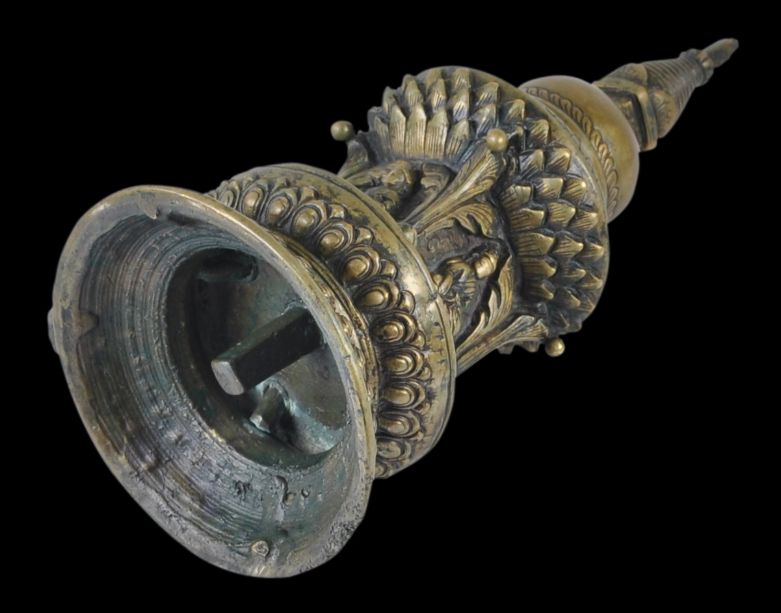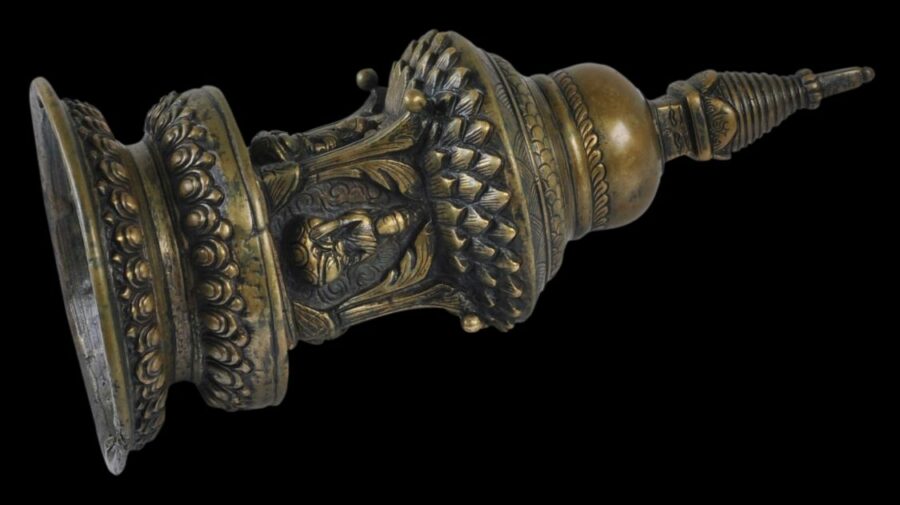This extraordinary cast, chiselled and engraved bronze/brass image of a Lingam-Yoni tells the story of the religious beliefs of the Newar people, the dominant ethnic group of Nepal, in one piece.
Traditionally, the Newar followed a form of Tantric Buddhism known as Vajrayana (the Path of the Thunderbolt). This form of Buddhism was popular in eastern India from about 600AD. Thereafter, it spread, most particularly to the Himalayas and to Tibet where several Vajrayana schools evolved including the Nyingma, Sakya, Kagyu and Gelug orders. The ruling elite converted to this new belief system and the old Bon religion of Tibet was displaced. In Nepal, the Newar similarly took up the new religion. But later, Nepal’s ruling families were more Hindu and so the Vajrayana beliefs of ordinary Newars took on more Hindu aspects so that today, the beliefs of the Newars are a syncretic mixture of Tantric Buddhism and Hinduism. This unusual Lingam-Yoni ensemble perfectly encapsulates this dichotomy.
The upper section of the lingam-yoni is in the form of a Hindu Lingam but also that of a Buddhist stupa with Buddhist details. The upper-most section has been cast and engraved to mirror Kathmandu’s famous Swayambhunath Stupa with its four faces in the four directions. (The Swayambhunath Stupa itself is in the Vajrayana tradition of Newar Buddhism, although the complex is revered by both Buddhists of many schools, and Hindus.)
The lower part of the ‘roof’ is rimmed by a cosmic naga or serpent, and this is mirrored on the lower part with the edge of tray of the yoni platform being cast with a long, thin naga whose tail and head overlap at the mouth of the yoni.
Just beneath the naga on the roof with its incised scales, is a border of cross-hatching which denotes the Cosmic Ocean. The roof itself is supported by beautifully-cast lotus petal eaves over a four-sided pillar each side of which is decorated with one of the four Tathagata Buddhas which act as talismanic guardians over the north, south, east and west.
The yoni base is of conventional form but is cast with an elaborate lotus-petal foot.
The lingam-yoni has been cast in two sections – the base and the upper part – and these are attached to each other with heavy, flared bolts.
The overall item has a fine patina and obvious age. The casting is of a very high standard.
This is the only representation of a Newar Vajrayana lingam-yoni stupa that we have seen.
References
Ramos, I., Tantra: Enlightenment to Revolution, Thames & Hudson/British Museum, 2020.


